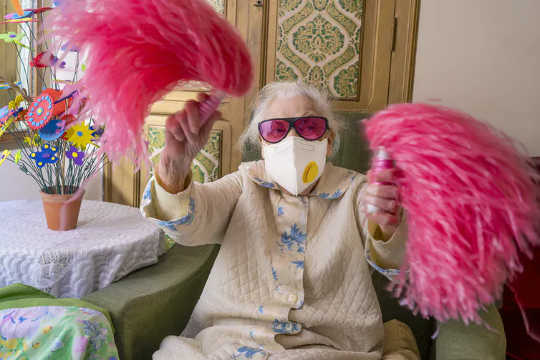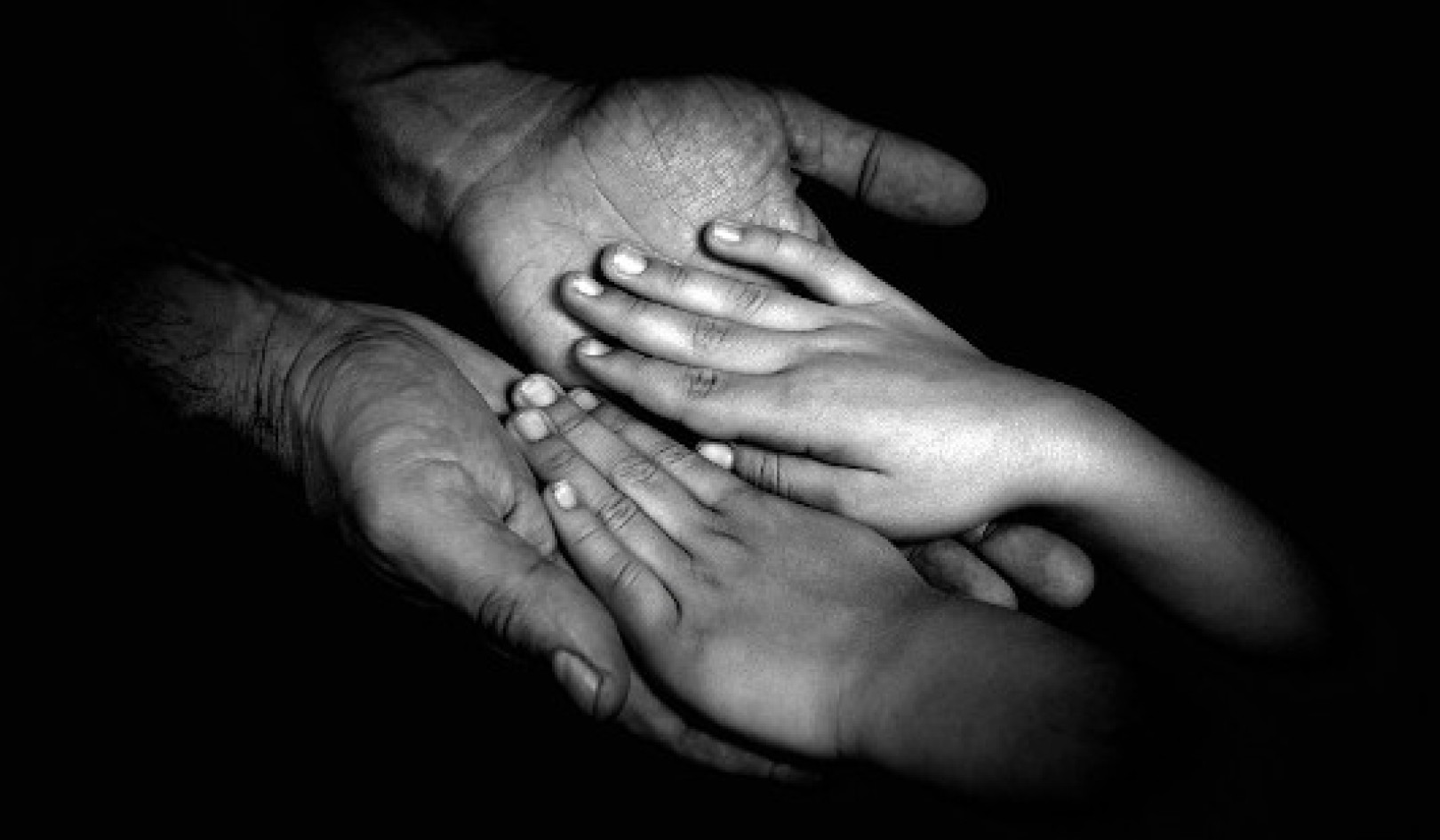
You don’t need rose-tinted spectacles to find joy – even in the most stressful times. MEDITERRANEAN /Via Getty Images
The year 2020 hasn’t been one to remember – in fact, for a lot of people it has been an outright nightmare. The pandemic, along with political turmoil and social unrest, has brought anxiety, heartbreak, righteous anger and discord to many.
Amid such suffering, people need some joy.
As a scholar who has investigated the role of joy in day-to-day life, I believe that joy is an incredibly powerful companion during suffering.
Speaking at funerals, teaching joy
This is more than academic work for me. In late 2016, less than a year after I was hired to be on a team researching joy at Yale University, three of my family members unexpectedly died within four weeks: my cousin’s husband Dustin at 30 by suicide, my sister’s son Mason at 22 of sudden cardiac arrest, and my dad, David, at 70 after years of opioid use.
While researching joy, I was speaking at funerals. At times, even reading about joy felt so absurd that I almost vowed to be anything but joyful.
In 2020, many people can relate to this.
I want to be clear: Joy is not the same as happiness. Happiness tends to be the pleasurable feeling we get from having the sense that life is going well.
Joy, on the other hand, has a mysterious capacity to be felt alongside sorrow and even – sometimes, most especially – in the midst of suffering. This is because joy is what we feel deep in our bones when we realize and feel connected to others – and to what is genuinely good, beautiful and meaningful – which is possible even in pain. Whereas happiness is generally the effect of evaluating our circumstances and being satisfied with our lives, joy does not depend on good circumstances.
An illumination
A couple of days after my cousin’s husband died, a small group of family members and I were shopping for funeral items when the group decided to go to the place where Dustin had died by suicide. It was getting dark and the sun had almost set.
As we were taking in the landscape we suddenly noticed a star above the trees. Standing next to one another in a line, we looked across the sky and one of us asked whether any other stars could be seen. There were none. We realized that there was just this one exceedingly bright shining star in the sky.
Gazing at the star, we felt as if Dustin had met us there, that he’d allowed that single star to be seen in the sky so that we would know he was all right. It was not the kind of relief we wanted for him. But for a few minutes we allowed the tragedy of what had occurred in this very space, just two days before, to hang in the background, and we instead focused on the star. We were filled with a kind of transformative, quiet joy. And we all gave ourselves over to this moment.
As scholar Adam Potkay noted in his 2007 book “The Story of Joy,” “joy is an illumination,” the ability to see beyond to something more.
Similarly, Nel Noddings, Stanford professor and author of the 2013 book “Caring,” describes joy as a feeling that “accompanies a realization of our relatedness.” What Noddings meant by relatedness was the special feeling we get from caring about other people or ideas.
Joy is also the feeling that can arise from sensing kinship with others, experiencing harmony between what we are doing and our values, or seeing the significance in an action, a place, a conversation or even an inanimate object.
When I teach about joy, I use an example from my family to explain this. When my sister looks at a Mason jar now – whether in someone’s hand filled with tea or bursting with flowers on a friend’s coffee table – it reminds her of her son Mason. It is not just an object she is seeing, but a relationship imbued with beauty, goodness and meaning. It gives her a feeling that can be described only as joy.
We cannot put joy on our to-do lists; it does not work that way. But there are ways we can prepare ourselves for joy. There are “gateways” to joy that help us to become more open to it.
Gratitude involves bringing to mind the good that is in the world, which makes rejoicing possible. The feeling that follows contemplating nature or art that we find inspiring is often joy, as these are experiences that help people feel connected to something beyond themselves, whether to the natural world or to others’ feelings or experiences. Since “hope,” as theologian Jürgen Moltmann has said, is “the anticipation of joy,” writing out our hopes helps us to expect joy.
Three types of joy
In my book, “The Gravity of Joy,” I identify multiple kinds of joy that can be expressed even in today’s troubled times.
Retrospective joy comes in vividly recalling a previous experience of unspeakable joy. For example, we can imagine in our minds an occasion when we helped someone else, or someone unexpectedly helped us, a time we felt deeply loved … the moment we saw our child for the first time. We can close our eyes and meditate on the memory, even walk through the details with someone else or in a journal and, often, experience that joy again, sometimes even more acutely.
There is a kind of joy, too, that is redemptive, restorative – resurrection joy. It is the feeling that follows things that are broken getting repaired, things that we thought were dead coming back to life. This kind of joy can be found in apologizing to someone we have hurt, or the feeling that follows recommitting ourselves to sobriety, a marriage or a dream we feel called to.
Futuristic joy comes from rejoicing that we will again glimpse meaning, beauty or goodness, and seemingly against all odds feel that they are connected to our very life. This type of joy can be found, for example, through singing in a religious service, gathering at a protest demanding change or imagining a hope we have being realized.
In the midst of a year in which it is not difficult to stumble onto suffering, the good news is that we can also stumble onto joy. There is no imprisoned mind, heartbreaking time or deafening silence that joy cannot break through.
Joy can always find you.
About the Author
Angela Gorrell, Assistant Professor of Practical Theology, George H. Truett Theological Seminary. George H. Truett Theological Seminary is a member of the Association of Theological Schools.![]() The ATS is a funding partner of The Conversation US.
The ATS is a funding partner of The Conversation US.
This article is republished from The Conversation under a Creative Commons license. Read the original article.

Books Improving Attitude and Behavior from Amazon's Best Sellers list
"Atomic Habits: An Easy & Proven Way to Build Good Habits & Break Bad Ones"
by James Clear
In this book, James Clear presents a comprehensive guide to building good habits and breaking bad ones. The book includes practical advice and strategies for creating lasting behavior change, based on the latest research in psychology and neuroscience.
Click for more info or to order
"Unf*ck Your Brain: Using Science to Get Over Anxiety, Depression, Anger, Freak-Outs, and Triggers"
by Faith G. Harper, PhD, LPC-S, ACS, ACN
In this book, Dr. Faith Harper offers a guide to understanding and managing common emotional and behavioral issues, including anxiety, depression, and anger. The book includes information on the science behind these issues, as well as practical advice and exercises for coping and healing.
Click for more info or to order
"The Power of Habit: Why We Do What We Do in Life and Business"
by Charles Duhigg
In this book, Charles Duhigg explores the science of habit formation and how habits impact our lives, both personally and professionally. The book includes stories of individuals and organizations who have successfully changed their habits, as well as practical advice for creating lasting behavior change.
Click for more info or to order
"Tiny Habits: The Small Changes That Change Everything"
by BJ Fogg
In this book, BJ Fogg presents a guide to creating lasting behavior change through small, incremental habits. The book includes practical advice and strategies for identifying and implementing tiny habits that can lead to big changes over time.
Click for more info or to order
"The 5 AM Club: Own Your Morning, Elevate Your Life"
by Robin Sharma
In this book, Robin Sharma presents a guide to maximizing your productivity and potential by starting your day early. The book includes practical advice and strategies for creating a morning routine that supports your goals and values, as well as inspiring stories of individuals who have transformed their lives through early rising.





















